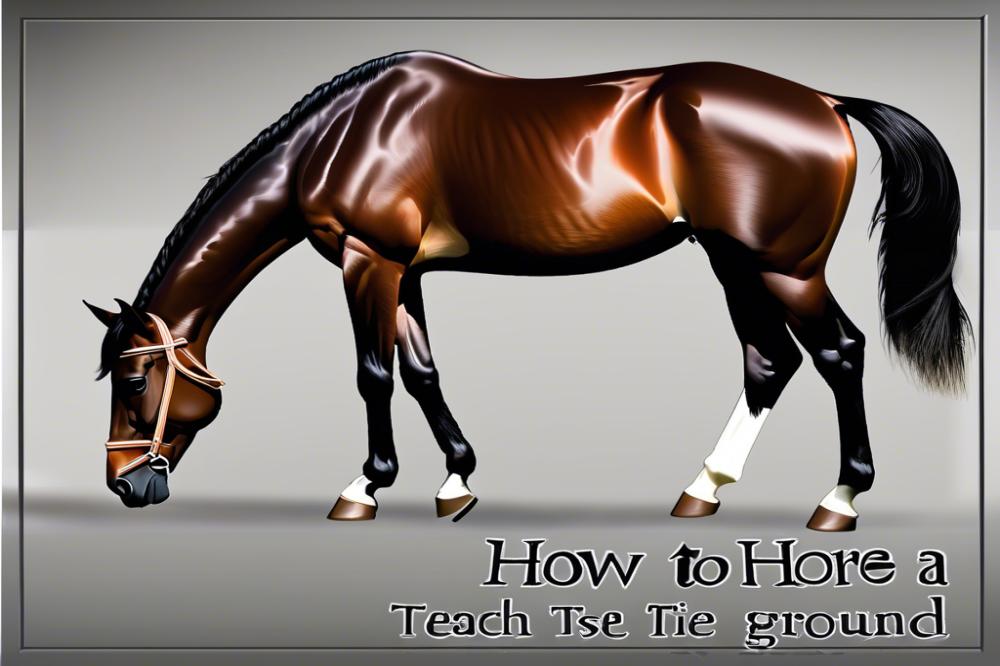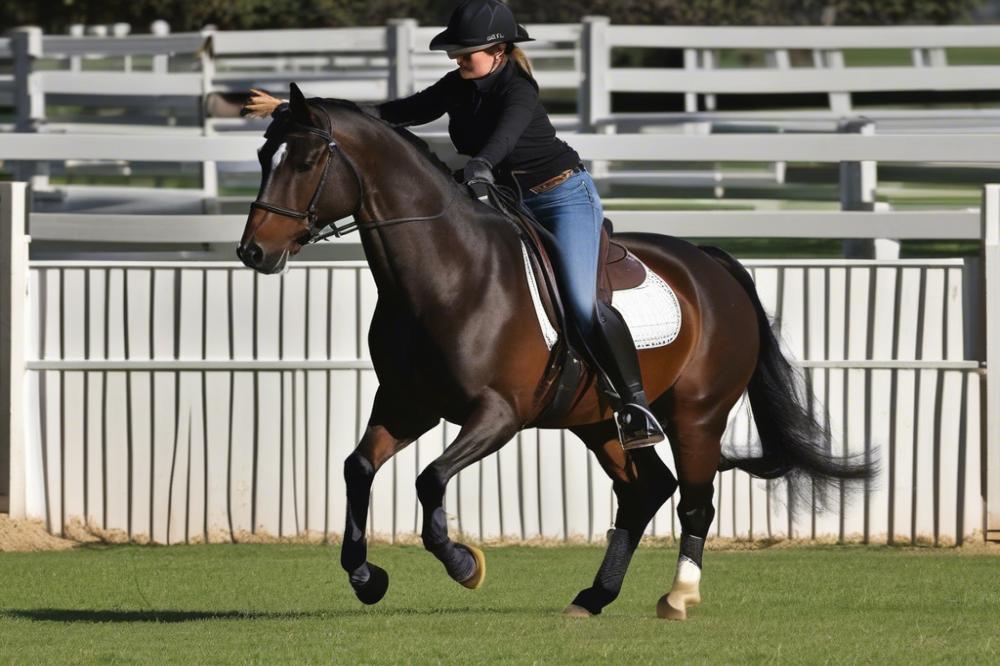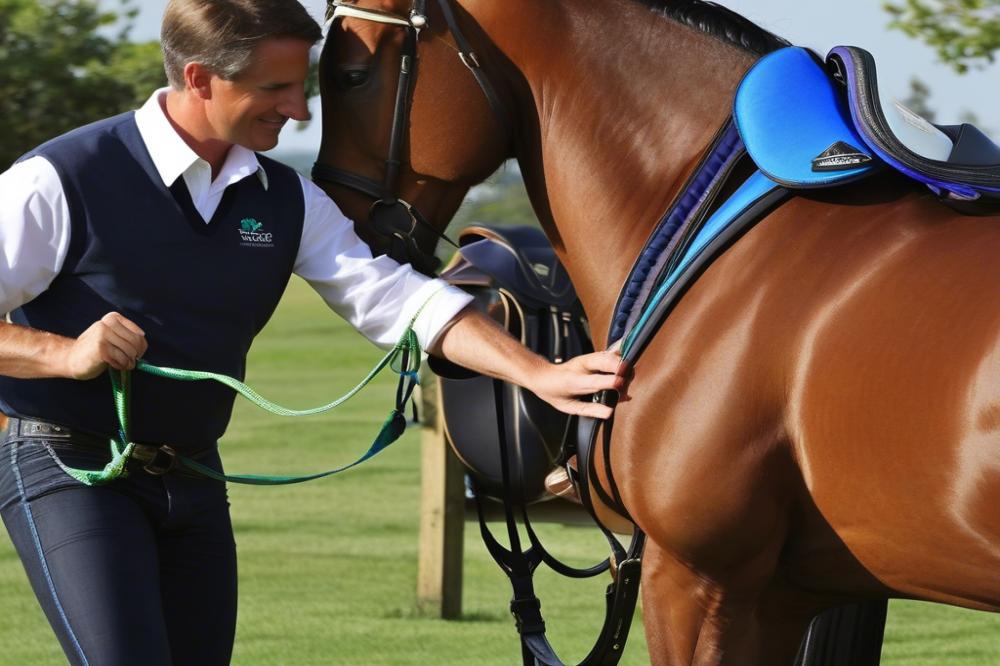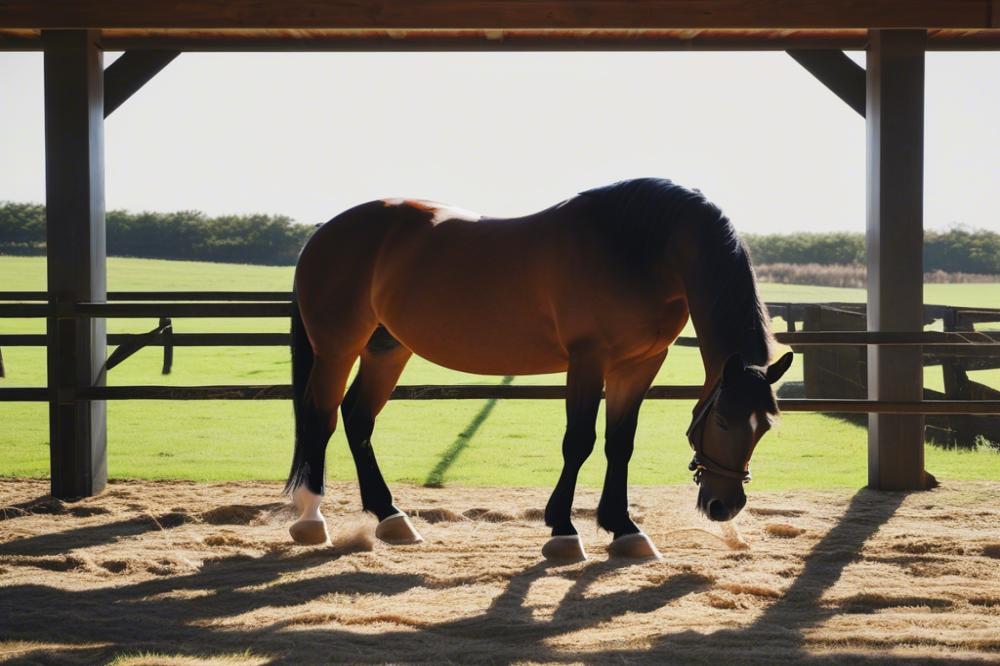Understanding Ground Tying
Have you ever seen a horse stand quietly while its owner moves around, completely relaxed and unbothered? That calmness could come from a skill known as ground tying. This technique allows a horse to remain in one spot without needing to be tied up. Essentially, the horse learns to respect the boundaries set by its handler, which can be quite a rewarding experience for both horse and rider. It’s an essential part of horse training that not only enhances communication between the two but also builds trust.
Benefits of Teaching Ground Tying

Learning to ground tie offers several advantages. First, it promotes patience in the animal. Picture this: you’re in a busy barn with cameras in barns capturing moments of care. A horse that can ground tie won’t move around, getting into trouble or stepping on someone’s foot when distracted. Instead, the horse patiently waits for its handler. This skill can be particularly useful during grooming or tacking up. You won’t have to wrestle with your horse every time you need to grab a brush or a saddle!
Additionally, ground tying can enhance safety in various situations. Sometimes, unexpected distractions occur. Whether a plastic bag flutters by or that dog next door decides to bark at the moon, a horse that knows how to stay put can help avoid accidents. When it comes to horse behavior, learning this skill can lead to more relaxed outings and fewer surprises.
Purpose of This Article

This article aims to simplify the process of teaching a horse to ground tie. By breaking down the steps, it will be easy to understand how to effectively introduce this technique to your horse. Whether you are a seasoned equestrian or new to horse care, this guide will help you understand ground tying, leading to a confident, well-mannered horse. Remember, every horse’s habitat can be different, and tailoring your approach is essential. Get ready to strengthen your bond with your equine friend while learning some effective equestrian techniques!
Understanding Ground Tying

Definition of Ground Tying
Ground tying refers to a horse’s ability to remain still while being loose, without any ropes or restraints. Imagine this as your horse being on a break but still paying attention. It’s a vital skill in horse training that can enhance safety and convenience. When a horse is ground tied, it stands quietly, even when distractions come their way. Riders can safely groom their horse or prepare for a ride without worrying about their buddy wandering off.
Difference Between Ground Tying and Tying to a Post
Tying a horse to a post involves a rope that keeps them in one spot. This can cause some horses to feel trapped or anxious. Ground tying, however, gives them freedom. Horses learn to respect boundaries without the fuss of a rope. They can turn their heads, nibble grass, or even observe the world around them. Ground tying also teaches confidence. Instead of being restrained, the horse learns to remain calm and focused.
Common Misconceptions about Ground Tying
Many people think that ground tying is only for advanced equestrian skills. This is misleading. While it does require some training, almost any horse can learn this technique with patience. Another myth is that ground tied horses can be easily distracted. In reality, a well-trained horse can ignore distractions like a champ. Some folks believe that training this skill is a quick fix. Effective training takes time, just like learning to ride or managing horse care. Trust builds slowly in horse behavior, and consistency is key.
Ground tying can feel like magic, but remember, it’s all about practice and understanding. You’ll discover that teaching a horse to ground tie can deepen the bond you share. That’s a reward worth the effort!
Preparing for Ground Tying
Choosing the Right Environment
Creating the perfect setting is essential for effective horse training. Look for an area that’s quiet and free from distractions. A calm spot helps both you and your horse focus. Avoid busy places where loud noises or other animals might break your horse’s concentration. A flat, open space is often best. This allows your horse to see everything around and feel secure. Think of it like picking the right classroom for a lesson; a quiet environment promotes better learning.
Essential Equipment and Tools Needed
Equipping yourself properly makes a big difference. Basic gear includes a halter, lead rope, and a good pair of gloves. You might also want some treats for positive reinforcement. Choose a lead rope that’s long enough to give your horse some freedom without losing control. Ground tying can be tricky. Consider using a training cone or a specific ground tie spot. It helps establish boundaries. Remember, safety gear isn’t just for you. Horses can benefit from well-fitted tack too!
Assessing Your Horse’s Temperament and Training Level
Understanding horse behavior is key before you start. Each horse has its own personality, much like people. Some might be calm and easygoing while others can be a bit rambunctious. Take a moment to assess what your horse is comfortable with. If your horse has experience with basic equestrian skills, that’s a plus! A horse that’s used to being handled will adapt more quickly to new techniques. Don’t rush this process; aiming for patience will help in the long run. An impatient trainer makes an impatient horse.
Step-by-Step Guide to Teaching Ground Tie
Introduce the concept of standing still
First things first, your horse needs to understand what standing still means. Imagine you’re taking a nap; you wouldn’t want someone bothering you, right? Start by leading your horse to a calm space. A quiet area will help ease distractions. You can stand beside your horse for a moment, gently stroking their neck. This helps them feel relaxed and focused. It’s all about building that trust.
Use pressure and release techniques
Next, let’s talk about pressure and release. This technique is a core part of horse training. It’s like using an invisible string to guide your horse. Apply gentle pressure on the lead, but the key is to stop as soon as the horse moves in the right direction. Think of it as a dance. Once your horse stands still, release that pressure immediately. Praise them like they just did a perfect cartwheel. Positive reinforcement goes a long way, and this is crucial in teaching equestrian skills.
Gradually increase distractions
With the basics in place, it’s time to layer in some distractions. Start with something small. Maybe a friend walks by or a deer wanders into sight. Your horse will be tested, but that’s where the fun starts! Each time they remain calm, shower them with praises. But, if they start to fidget, gently bring the focus back to standing still. Think of it like training for a big performance; you wouldn’t want a sudden loud noise to throw everything off. So, keep practicing until your horse can handle more commotion without losing their cool.
Reinforcement and rewards for success
Finally, let’s get to the good stuff: rewards! Horses love treats, and who doesn’t? Every time your horse succeeds in standing still, reward them. This could be a tasty carrot or some extra scratches behind the ears. Use your equestrian techniques to build a positive connection. With time, your horse will associate standing still with good things. Imagine training as a journey, where each step forward deserves a little celebration! Soon, your horse will be a pro at ground tying, impressing everyone around.
Troubleshooting Common Issues
Identifying Signs of Anxiety or Restlessness
Spotting a nervous horse is key. They may start pawing at the ground or shifting their weight side to side. An anxious horse often looks around, as if they’re searching for an escape route. Their ears might flick back and forth like radar. Recognizing these signs early can help you address issues before they escalate. Sometimes your horse might show subtle signs, like a tight body or an unusual stillness. Keep an eye on their heart rate, too. A quickened pulse can indicate stress. All in all, the more observant you are, the better you’ll understand their behavior.
Strategies for Addressing Pulling or Moving
When your horse begins pulling or moving, staying calm is crucial. If you react with frustration, it could lead to more anxious behavior. Gently redirect their energy by using soft commands. A gentle tug on the lead rope can remind them of their standing position. If they pull, ground tying requires patience. Backing away slightly sometimes makes them think twice about moving. Repetition can work wonders; practice these commands slowly over several sessions. The goal is to reinforce their understanding of staying put. Remember, it takes time to develop good equestrian skills.
Using Positive Reinforcement Effectively
Who doesn’t love a little treat? Using positive reinforcement can create a strong bond between you and your horse. When your horse stands still, reward them with a tasty snack or a gentle pat. This simple act gives them something to look forward to when they behave. Keep the treats handy, but don’t spoil your horse. Instead, use them strategically. Make it a habit to praise your horse verbally when they do well. They might respond to your kind words as much as to food! Creative training strategies can enhance your sessions, turning them into fun experiences.
Maintaining Ground Tying Skills
Regular Practice Sessions
It’s easy to think that once your horse learns to ground tie, the job is done. But just like any skill, it needs to be practiced. Think of it like riding a bike. If you don’t hop on that bike regularly, you might forget how to balance. So, set aside time each week to work on this equestrian skill. Make it a part of your routine. Even a few minutes here and there can make a big difference.
Incorporating Ground Tying into Daily Routines
Imagine your horse is part of your daily life, much like a family pet. When you groom, tie your horse to the post instead of holding the lead. It’s simple, yet effective. While you brush their mane or clean their hooves, you reinforce the ground tying technique. Your horse will start to associate everyday activities with the command. Doing this will create a sense of reliability for your equine friend.
Building Reliability in Different Environments
Now, don’t forget that horses are creatures of habit. They can be very sensitive to new surroundings. Take it to the next level by practicing in various places. Try ground tying in the barn, in an open field, or during shows. Each environment will present unique challenges. If your horse can stay relaxed and calm in all those spots, you know you’re making progress in their training.
Sometimes, it might feel like your horse has a mind of its own. That’s horse behavior for you! Be patient and understanding. If things don’t go as planned, laugh it off. They might just decide that a butterfly is more interesting than standing there. Remember, maintaining these skills takes time. But the payoff? Well, it’s being able to tie your horse anywhere with confidence.
Advanced Techniques for Ground Tying
Teaching ground tying in diverse situations can be a lot of fun. You may want to work with your horse in different settings. Start in a quiet area, then gradually introduce distractions. Use a busy barn or an open field. Your horse will learn to stay put, no matter what chaos is around. This skill transfers well to more challenging environments.
Using Ground Tying in Trail Riding or Shows
Imagine preparing for a trail ride or a show, and your horse stands quietly next to you. It’s a beautiful sight! Ground tying trains your horse to be calm and collected. When waiting on a trail, your horse will enjoy peace while you take a snack or chat with friends. In shows, it shines too. A horse that can stand still looks professional and confident. Judges appreciate well-mannered horses. They know the effort put into basic horse training.
Innovative Training Methods and Exercises
Why not shake things up? Use creative exercises to keep both you and your horse interested. For starters, try positive reinforcement. When your horse stands still, give them a treat or some gentle praise. This encourages good behavior. A fun game? Toss a ball or even a sponge at a distance. Your horse will learn to ignore the movement and stay grounded.
Another idea is to practice at feeding time. If your horse knows the routine, they can learn to stay put while you prepare their meal. Adding these innovative horse care methods makes learning more engaging. Keep sessions short but sweet. Remember, the goal is to build a solid foundation.
Don’t forget about different ground surfaces. Grass, gravel, or even dirt all provide unique challenges. Horses experience various textures. Ground tying in each setting can enhance their reaction to different terrains. Using random objects nearby, such as umbrellas or chairs, can also be beneficial. Make it a confidence-building exercise.
Finally, each horse has its own personality. Some are naturally more anxious than others. Adjust your training methods based on their horse behavior. If your horse is nervous, increase your patience. Everyone wins when the process is enjoyable. Stick to clear commands and remain calm. The horse will pick up on your calmness.
Wrapping It Up
When it comes to working with our equine friends, teaching a horse to ground tie is an invaluable skill. Imagine being able to dismount, take off your saddle, or grab something from the trailer without your horse wandering off. It feels like that moment in a film when the hero conquers all odds—straight out of a storybook! Ground tying not only makes things easier for you, but it also provides your horse with a sense of security and trust in their surroundings.
Consistency is key. Like learning to ride a bike or bake a perfect loaf of bread, practice makes perfect. You might not see results overnight, but with time, patience, and a sprinkle of humor (because sometimes a horse just seems to enjoy making us giggle), you’ll notice progress. Remember, every little success counts, whether it’s just a moment of stillness or a solid five minutes of peacefulness during a clattering endurance ride. That last thing you want is to chase after your horse who just decided to take a stroll while you’re busy figuring out the right moment to be on a coffee break!
In many ways, ground tying enhances the bond between horse and handler. It fosters a stronger relationship built on trust and communication. You’ll find your horse becomes more attuned to your cues. Seeing them calmly standing there while you sip your coffee or tend to other tasks can feel like a victory. That peaceful moment of horse licking its lips while patiently waiting is absolutely worth the effort.
So, as you continue your journey, keep in mind that the ups and downs are all part of the process. Celebrate the small victories, and don’t be afraid to laugh at yourself when things don’t go perfectly! Ultimately, the rewards of a well-trained ground tying horse will enrich your experiences together, making every ride and every outing all the more enjoyable.



